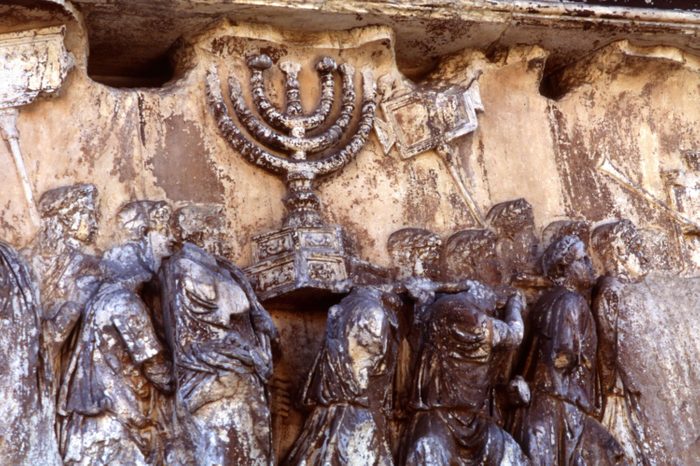
The 2,000-year old menorah
Hidden treasures often carry much historical significance. Almost 1,950 years ago, in the year 70 AD, the Romans sacked the Temple of Jerusalem and absconded with the temple’s prized Menorah. “We know they brought it to Rome,” Colgate University classics professor Professor Robert Garland tells Reader’s Digest, because it’s “depicted on the frieze on the Arch of Titus in the Forum.” Some claim the menorah was housed at Rome’s Temple of Peace, which burned down in the year 191 after which the fate of the Menorah is uncertain.
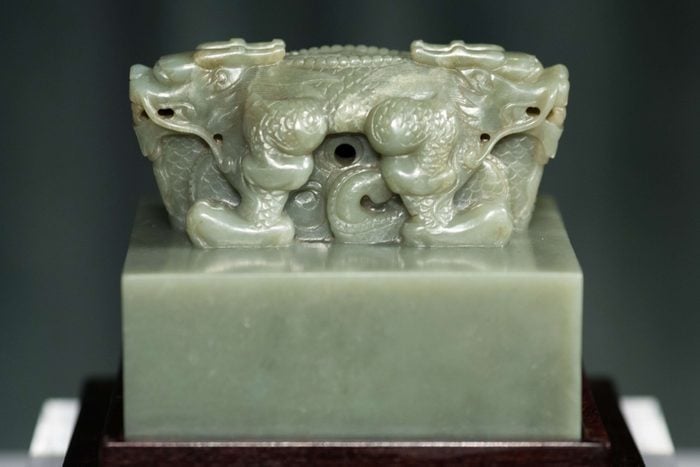
The Imperial Seal of China
The Imperial Seal, also known as the Heirloom Seal of the Realm, is a jade seal that was carved in 221 BC for the then-newly elevated Emperor of China. It passed from dynasty to dynasty until the 10th century AD; after that, there is no record of its existence. Several theories exist as to its fate, and most recently, several seals have been claimed to be the authentic one. None of those claims have been confirmed so far. You might be able to find more hidden treasures in these forbidden places no one is allowed to visit.
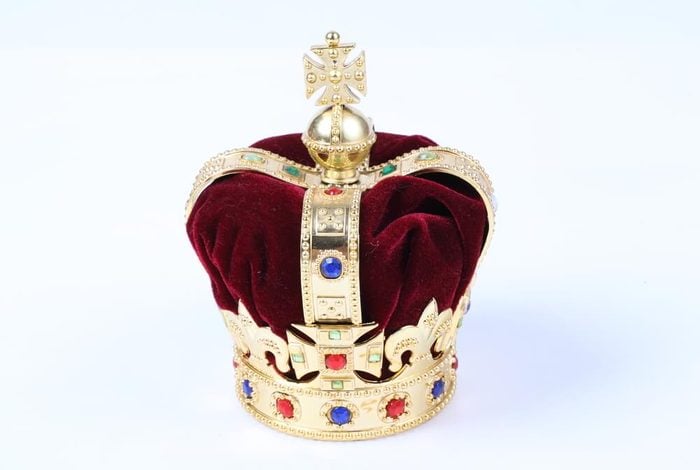
The Crown Jewels of England
Back in the year 1216, King John of England was so despised that he’s known as King John the Bad. After signing the disastrous Magna Carta, he was fleeing from enemies carrying with him some of the Crown Jewels of England. King John fell ill with dysentery, and in the rush by his entourage to seek medical help, they lost track of the baggage containing the jewels. It’s possible they sank in the muddy waters of the Wash (although there is debate about whether the king actually had the jewels with him).
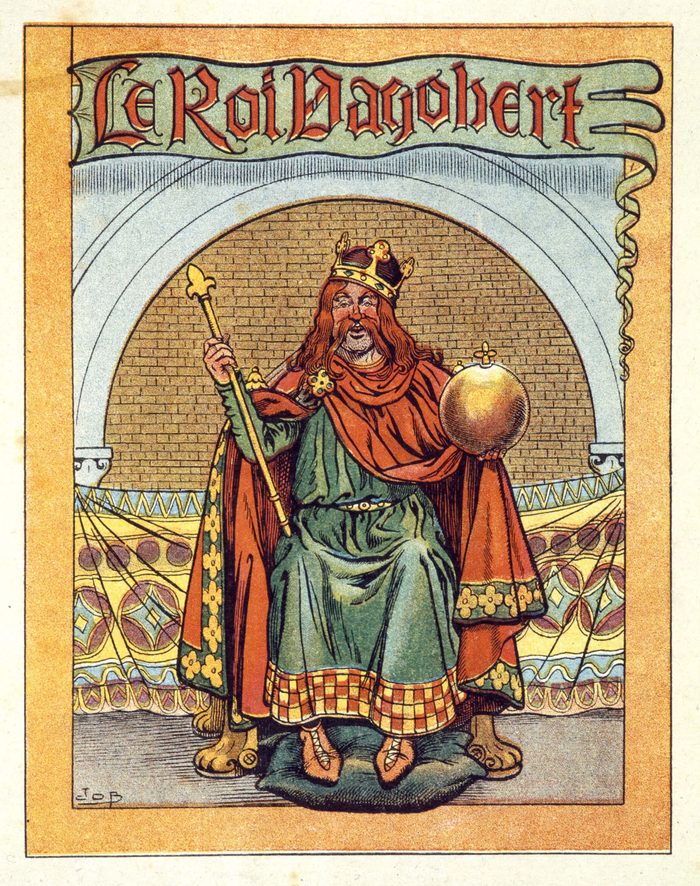
The Scepter of Dagobert
The Sceptre of Dagobert was part of France’s crown jewels. Dating from the 7th century (it was created for King Dagobert for his coronation) and made of solid gold, it was stored in the Basilica of St Denis until 1795, when it disappeared, never to be seen again. It’s believed to have been stolen, and its whereabouts remain a mystery to this day. If you like learning about hidden treasures, you’ll also want to check out these strange urban legends actually turned out to be true.

The Florentine Diamond
The great yellow diamond of the Medici family originally came from India and was said to be 137.27 carats. In the late 17th century, when the last of the Medicis died, the Florentine Diamond passed to the Imperial Family of Austria; at the time, it was valued at $750,000. After the fall of the Austrian Empire, during World War I, the family took it with them into exile in Switzerland. Its whereabouts after that are unknown. Some think it was stolen by someone close to the family. Some theorize that the diamond was broken down into smaller stones and will therefore never be seen again.

The Treasure of San Miguel
The San Miguel was a Spanish ship carrying large amounts of precious metals and stones that the Spanish king hoped to sell to fund his ongoing War of Succession. In 1715, it sunk in a storm off of Cuba and has never been found. Some speculate it is one of the richest treasure ships ever to have been lost. Be sure to check out 50 of the spookiest urban legends from each state.
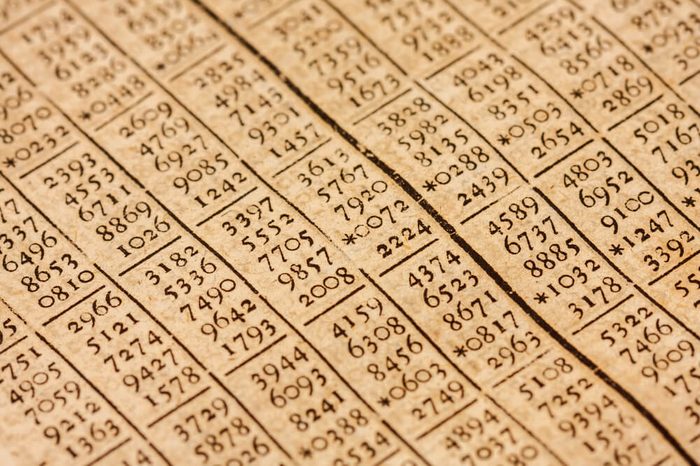
Thomas Beale’s code
In 1816, Thomas Beale and a few companions came into a large sum of gold and silver while mining somewhere in the Rocky Mountains. Hoping to keep it safe for their families, the men hid the treasure, and Beale painstakingly wrote a letter—in code—describing exactly where it could be found. He then placed the letter in a box and gave the box to a Virginia innkeeper for safekeeping. Beale never came back for it. The innkeeper opened the box years later, but no one was ever able to decode the letter.

The lost gold mine
Back in the 1840s, prospectors established a gold mine in the Superstition Mountains of central Arizona. The mine proved profitable until a group of Apaches slaughtered those working it. The mine’s location was lost with its workers until the 1870s when a German immigrant named Jacob “The Dutchman” Waltz was said to have rediscovered it. On his deathbed, the Dutchman is said to have described the mine’s location to Julia Thomas, a Phoenix-area neighbor who took care of him, but she couldn’t locate it. Don’t miss the strangest unsolved mysteries of all time.

The Confederate Gold
When the smoke cleared after the end of the Civil War in 1865, millions of dollars’ worth of gold turned out to be lost or unaccounted for and has since been the subject of speculation by historians and treasure-hunters. Some believe that Confederates hid some portion of the treasury while waiting for the South to rise again. Not long ago, a group of history buffs from Michigan developed the theory that some of the hidden treasures—about $140 million dollars’ worth—are sitting at the bottom of Lake Michigan.

The Fabergé Eggs
Starting in 1885, the Tsars of Russia gifted the ladies in their life with eggs made of precious stones and metal by the jeweler Fabergé. Each was a treasure, and the eggs contained smaller treasures within—such as a golden crown inside a golden hen inside a golden yolk—according to history buff Corey Chappelle. A total of 50 were made, all of which were confiscated by the new Russian government during the Russian Revolution of 1917. While historians can account for many of the eggs, seven remain missing. There’s still hope they’ll be found: in 2012, one was discovered by an American scrap metal dealer sitting on a shelf in his house.
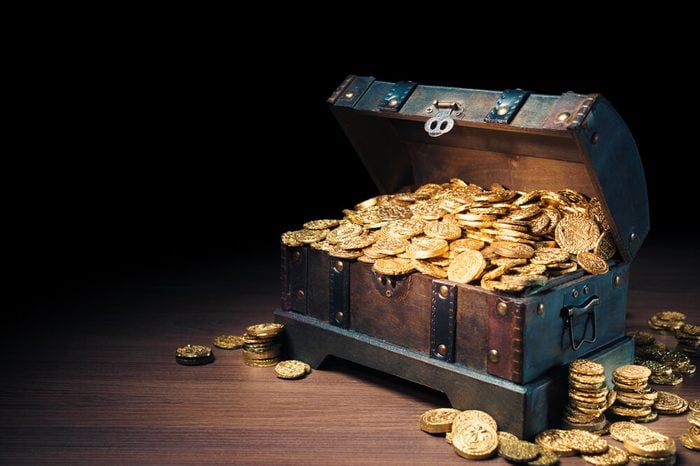
Leon Trabuco’s Gold
In the early 1930s, Mexican millionaire Leon Trabuco arranged several mysterious flights to the desert of New Mexico. It was said that Trabuco and several business partners were hiding gold and waiting for prices to rise before selling it. But when the US implemented the Gold Act of 1934, making private ownership of gold illegal, Trabuco and his partners were out of luck. Within a few months, all of them turned up dead under mysterious circumstances, and the location of the gold died with them. Here are some more mysteries science still hasn’t been able to figure out.
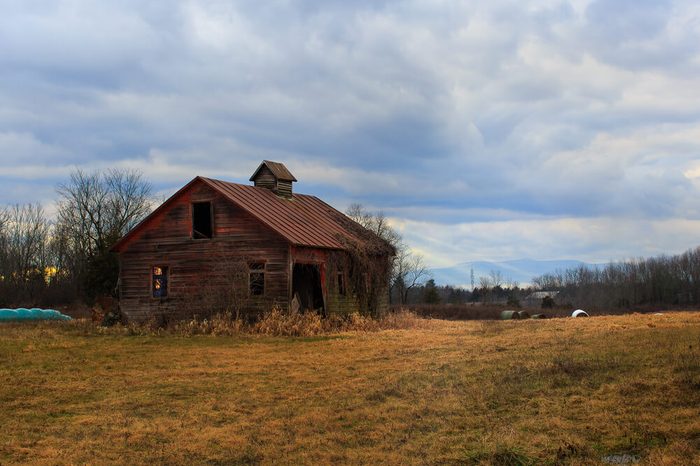
Dutch Schultz’s Catskills cache
In 1935, a rival gang mortally wounded Dutch Schultz, a Prohibition-era gangster. While he lay dying, Schultz muttered incoherently about a treasure that he had his bodyguard, Bernard Rosenkrantz, buried somewhere in the Catskill mountains of New York State. Unfortunately, Rosenkrantz died without sharing the information, and no one has ever been able to figure out where the treasure is. Check out these conspiracy theories that turned out to be true.
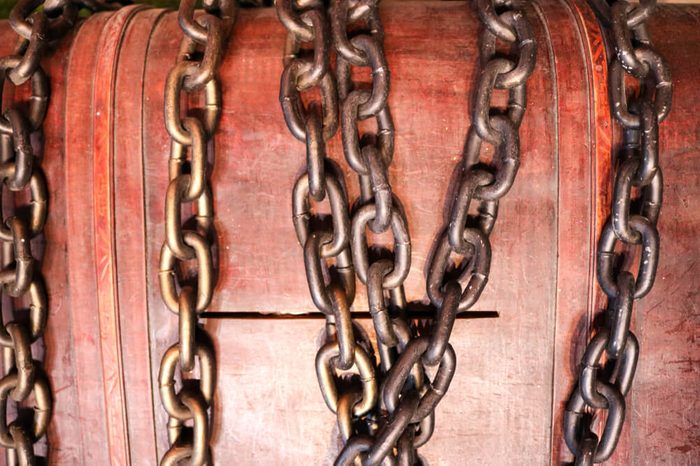
The Royal Casket
A Polish noblewoman by the name of Izabela Czartoryska created the Royal Casket in 1800. The large wooden box contained 73 precious relics that had once belonged to members of the Polish monarchy, and it included gold watches, chains, silver rosaries, ivory boxes, and silver cutlery. At the outbreak of the Second World War, the casket was transported to the town of Sieniawa in southeast Poland, where it was hidden in a bricked-up repository. It hasn’t been seen since, though according to one version of events a local German mill owner betrayed its location to the invading Nazis. None of the casket’s inventory has ever been found.
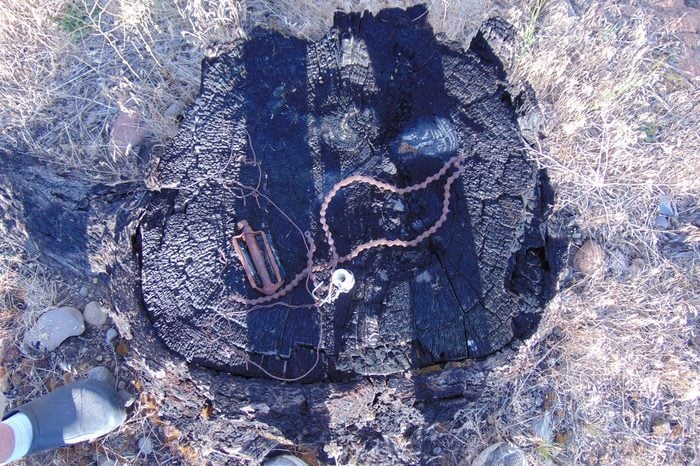
Forrest Fenn’s lost stash
In 1988, when Vietnam veteran and treasure hunter Forrest Fenn believed he was going to die from cancer, he filled a small chest with his treasures and buried it somewhere in the Rocky Mountains. When he actually beat the disease, he published a poem containing all the clues he believed were necessary to discover the chest’s location. Fenn, who is in his 80s now, estimates that somewhere around 65,000 people have headed out to the Rocky Mountain wilderness in search, but no one has found it yet. Disturbingly, several people have died in the quest. Note: The treasure was found on June 8. Read the full story here.
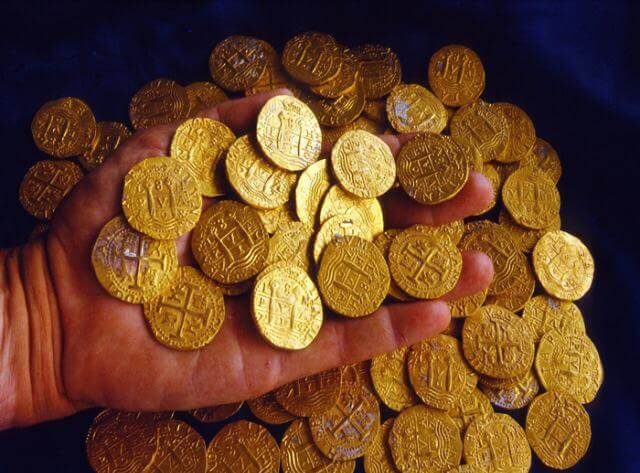
The Vero Beach treasures
Over the centuries, an untold number of shipwrecks occurred off the coast of Vero Beach in Florida, shares Mary Jane Kolassa, a public relations executive in Florida with Reader’s Digest. This has led treasure hunters from all over the world to seek their fortune in the area to this day. Although millions of dollars in gold coins and valuable artifacts have already been found (much of which is on view at local museums, and some of which is for sale), the remainder of the hidden treasures lie beneath the waves, waiting to be found. Next, don’t miss these ancient mysteries that researchers still can’t explain.
